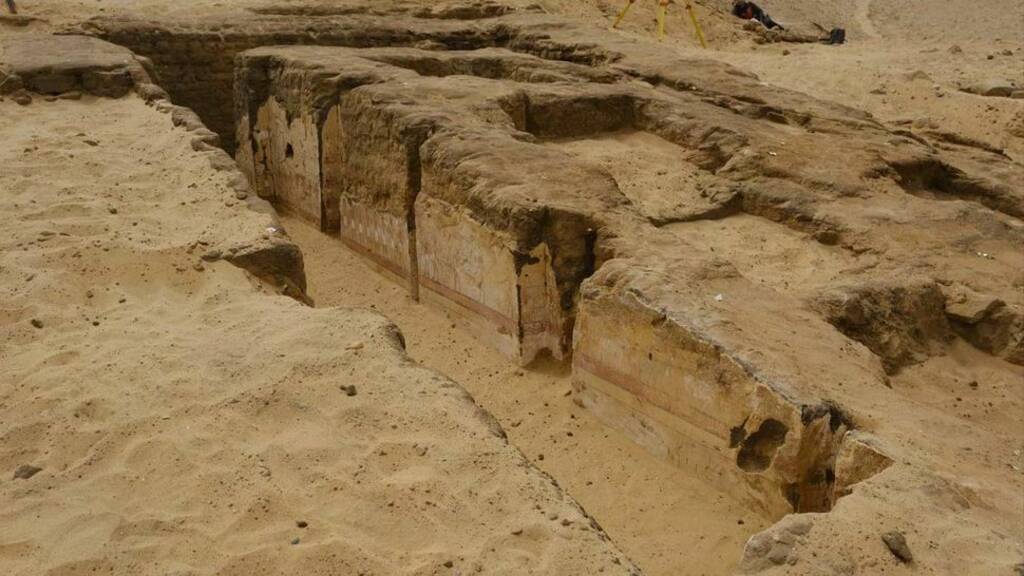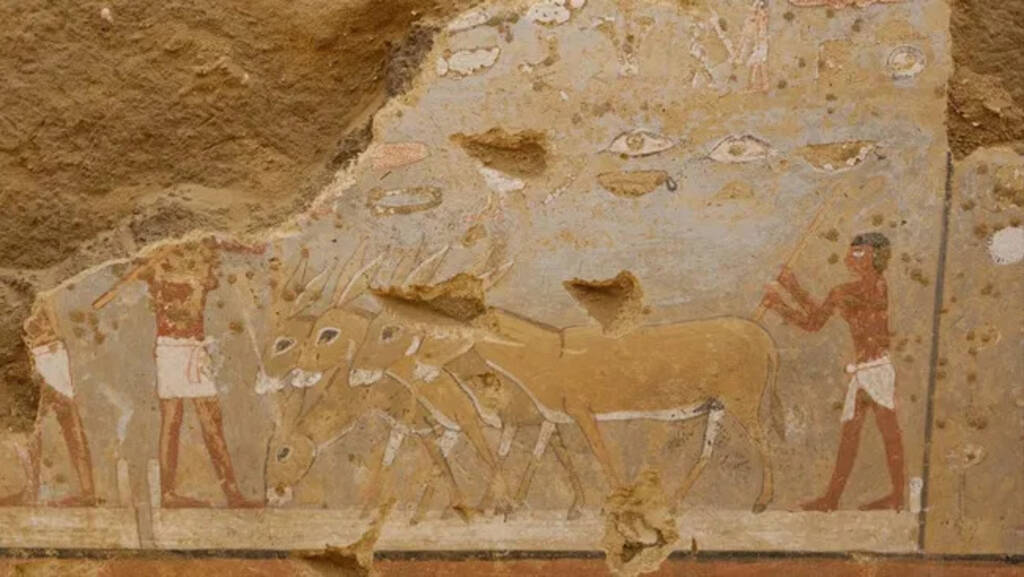
The place of discovery of the 4300-year-old tomb was Dahshur, located at a distance of about 33 kilometers from Cairo, known for its historical treasures and magnificent monuments.
A tomb made of raw bricks and known as a mastaba. From the outside, it resembles a rectangular building with a flat and slightly sloping roof. And as usual, the most interesting thing awaited the researchers inside - the walls painted with scenes from the everyday life of Ancient Egypt.

Ministry of Tourism and Antiquities of Egypt
Among the images are processing of grain, trade in markets, transportation of goods on the Nile. Egyptologists also managed to identify hieroglyphic inscriptions on the walls of the tomb, which helped to understand who was buried in this tomb. It turned out that Seneb-Neb-Af and his wife Idet lie in it.
The man held several management positions in the royal palace. His wife was a priestess of the goddess of the sky, motherhood and music Hathor. However, to finally confirm this, scientists need to conduct additional research.
"It is difficult to say what exactly Seneb-Neb-Af was doing. The neighboring city was under the control of the palace, and perhaps he decided who could live there and was responsible for managing the community's resources," says the head of the excavations, archaeologist of the German Archaeological Institute Stefan Seidlmeier.

Ministry of Tourism and Antiquities of Egypt
According to Seidlmeier, this married couple lived at the end of the fifth or beginning of the sixth dynasty, about 4,300 years ago. Pyramids were still being built in Egypt at the time, but they were smaller than those built during the Fourth Dynasty at places like Giza.
In order to date the find, archaeologists turned to the style and content of the hieroglyphic inscriptions, existing paintings and features of the construction of the tomb.
This discovery provides new unique opportunities for research and understanding of the life and culture of ancient Egypt.
Source: historia.nationalgeographic.com.es
